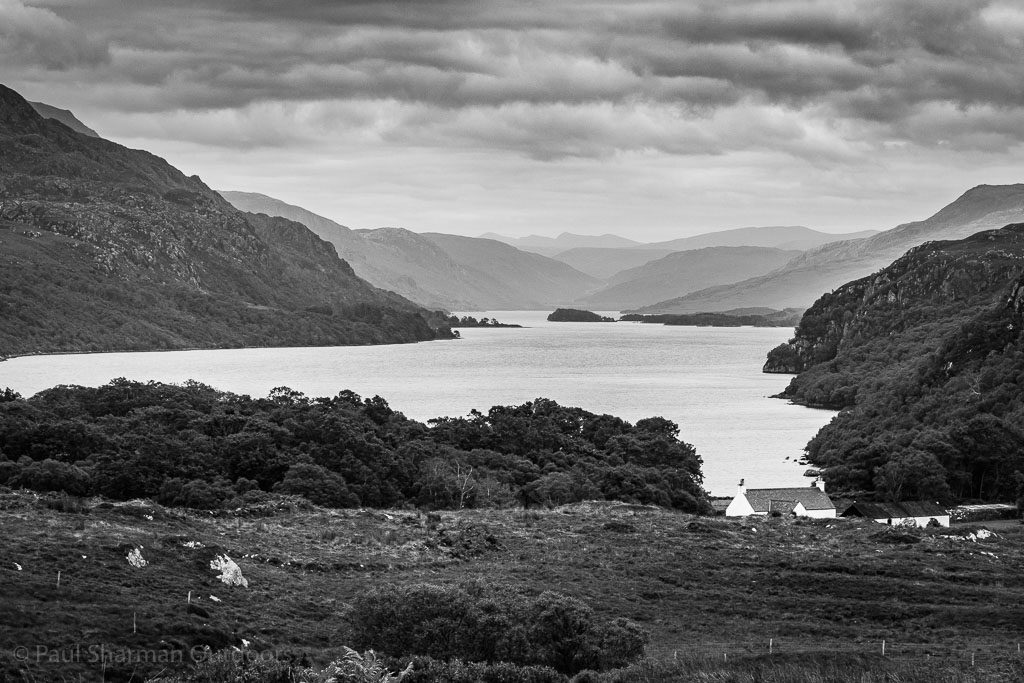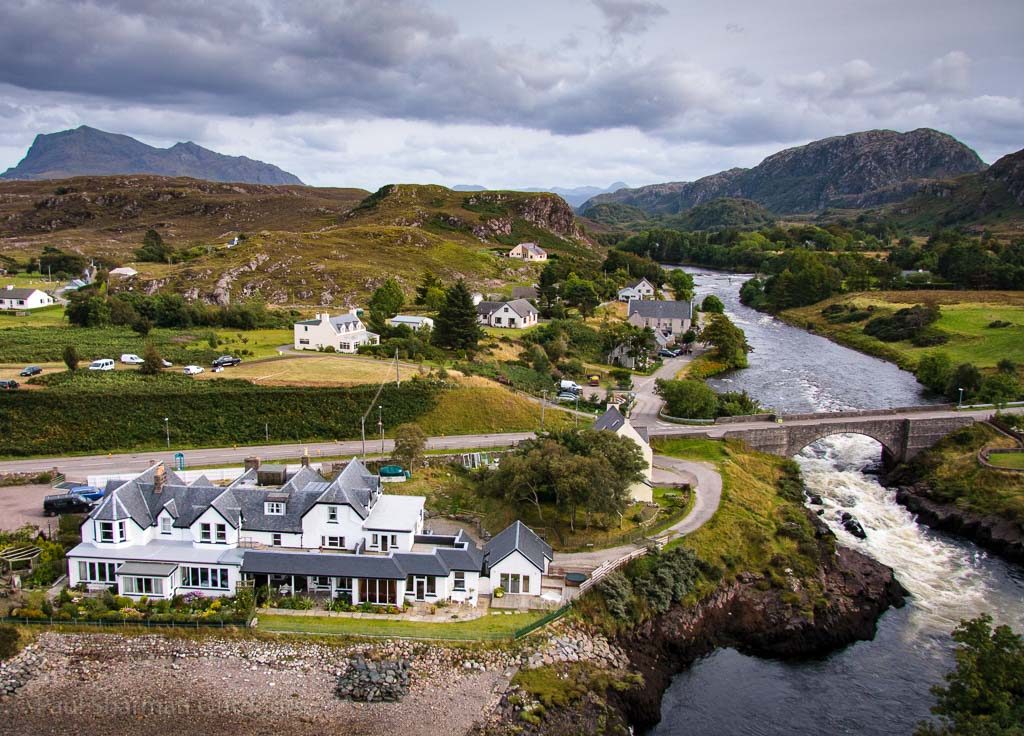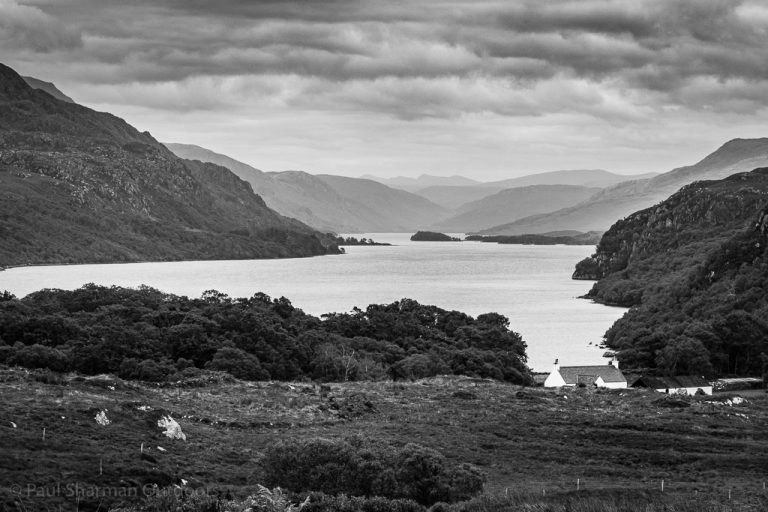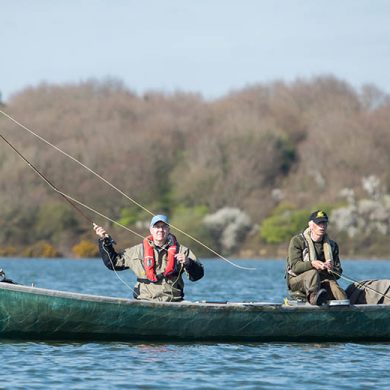Salmon and Trout Conservation Scotland (S&TCS) is mounting a concerted campaign aimed at restoring what was formerly the finest sea trout fishery in Scotland. Sea trout stocks in Loch Maree collapsed in 1988, one year after the start of salmon farming in Loch Ewe, the sea loch into which Loch Maree drains via the River Ewe.

The launch of the S&TCS campaign was marked last week by a Parliamentary reception at Holyrood at which the new S&TCS film, The demise of Loch Maree, once the world’s finest sea trout fishery was premiered. The film is a powerful and graphic illustration of how a poorly sited salmon farm can have a devastating impact on what was previously a prolific and entirely sustainable wild fishery.

Andrew Graham-Stewart, Director of S&TCS, said: “With the benefit of hindsight, no-one – including Marine Harvest – would have located an open-cage salmon farm in such an enclosed sea loch as Loch Ewe. The consequences for wild sea trout and the world-renowned Loch Maree fishery have been catastrophic. It is surely no coincidence that catches in Loch Maree collapsed within a year of the start of salmon farming in the loch – as the graph below makes abundantly clear – and they have never recovered.”

S&TCS is also publishing a comprehensive 67 pp study – Collapse of Loch Maree sea trout: how culpable is salmon farming? – by Dr Andrew Walker MSc PhD, formerly senior scientist at Scottish Government’s Fisheries Research Services (the predecessor to Marine Scotland Science). It concludes that “the introduction of salmon farming in Loch Ewe close to the River Ewe’s estuary played a prominent part in the changes in sea trout stock dynamics in the River Ewe system, leading to the collapse of the angling fishery in Loch Maree.”

Hughie Campbell Adamson, Chairman of S&TCS, said: “We fully accept that salmon farming is a very important industry for Scotland. What we are asking for is the relocation of those farms which are simply in the wrong place or are incapable of controlling sea lice and thus are causing significant damage to wild salmon and sea trout stocks.”
Andrew Graham-Stewart, Director of S&TCS, added: “There can be no doubt that sea lice produced on the Loch Ewe farm have been responsible for the crash in the local sea trout population with almost no young fish reaching maturity. Large sea trout are now virtually non-existent. Given the ill-advised location of the farm in a sea loch with limited flushing, even low numbers of sea lice on the farm constitute an efficient breeding facility for these parasites with the inevitable ability to infect juvenile sea trout with lethal consequences. The only viable solution is to remove the farm from Loch Ewe and create a salmon farm-free area – thus giving the formerly great Loch Maree fishery the opportunity to recover.”
In September 2015 SEPA reduced the permitted biomass of fish in the Loch Ewe farm from almost 1400 tonnes to 1027 tonnes following unsatisfactory benthic surveys.
Scottish Government action required
Fisheries scientists – including the Scottish Government’s own scientists – are firm in their conclusions that sea lice produced on fish-farms harm wild salmon and sea trout, both at an individual and at a population level. However, S&TCS believes that these threats are not being addressed by effective regulation and control of sea lice numbers on fish-farms in Scotland, which are essential to protect wild fish populations, many already significantly reduced. In 2015, the S&TCS raised a formal Petition to the Scottish Parliament, which seeks to change the law, firstly to require immediate culls or harvesting of farmed where sea lice numbers have effectively gone out of control and secondly to give fish farm inspectors the legal duty to control sea lice on fish farms, expressly to protect wild fish populations from juvenile sea lice infestation from marine cage fish farms. The Petition is currently being considered by the Scottish Parliament’s Rural Economy and Connectivity Committee.
Just what is the problem with sea lice?
Adult wild salmon are perfectly adapted to coping with a few sea lice. Background levels of these parasites occur naturally in the sea. However the advent of salmon farming, particularly in fjordic or largely enclosed sea lochs, has led to a fundamental change in the density and occurrence of sea lice in parts of the coastal waters of the west Highlands and Islands. Even one or two mature female sea lice per fish within a set of cages housing hundreds of thousands of farmed salmon amounts to a rampant breeding reservoir pumping huge numbers of mobile juvenile sea lice out into the local marine environment. The consequences when wild salmon and sea trout smolts, the metamorphosing fragile skin of which is not adapted to cope with more than the odd louse, migrate from local rivers into this “sea lice soup” can be devastating.
Carrying an unnaturally high burden of sea lice is known to compromise severely the survival of juvenile migratory salmonids. Lice feed by grazing on the surface of the fish and eating the mucous and skin. Large numbers of lice soon cause the loss of fins, severe scarring, secondary infections and, in time, death. Quite literally, the fish are eaten alive. Badly infested salmon smolts disappear out to sea, never to be seen again. In contrast afflicted sea trout smolts remain within the locality and they, together with the impact of the deadly burdens they carry, are more easily monitored through sweep net operations.
The 2016 paper Aquaculture and environmental drivers of salmon lice infestation and body condition in sea trout (Shephard et al, Aquaculture Environment Interactions) analysed a 25 yr dataset of lice counts from >20 000 sea trout sampled from 94 separate river and lake systems in Ireland and Scotland at varying distances from marine salmon farms and concluded that “sea trout captured closer to salmon farms had significantly higher levels of lice infestation, and that this effect was exacerbated in warmer years. Sea trout sampled closer to salmon farms also had significantly reduced weight at length (impaired condition), with the strongest impact in dry years.
More Information
Salmon & Trout Conservation UK (S&TC UK) was established as the Salmon & Trout Association (S&TA) in 1903 to address the damage done to our rivers by the polluting effects of the Industrial Revolution. Since then, S&TC UK has worked to protect fisheries, fish stocks and the wider aquatic environment for the public benefit. S&TC UK has charitable status in both England and Scotland (as S&TCS) and its charitable objectives empower it to address all issues affecting fish and the aquatic environment, supported by robust evidence from its scientific network, and to take the widest possible remit in protecting salmonid fish stocks and the aquatic environment upon which they depend. www.salmon-trout.org www.salmon-troutscotland.org
The report; Collapse of Loch Maree sea trout: how culpable is salmon farming? by Dr Andrew Walker MSc PhD, is available to view by clicking the link.


